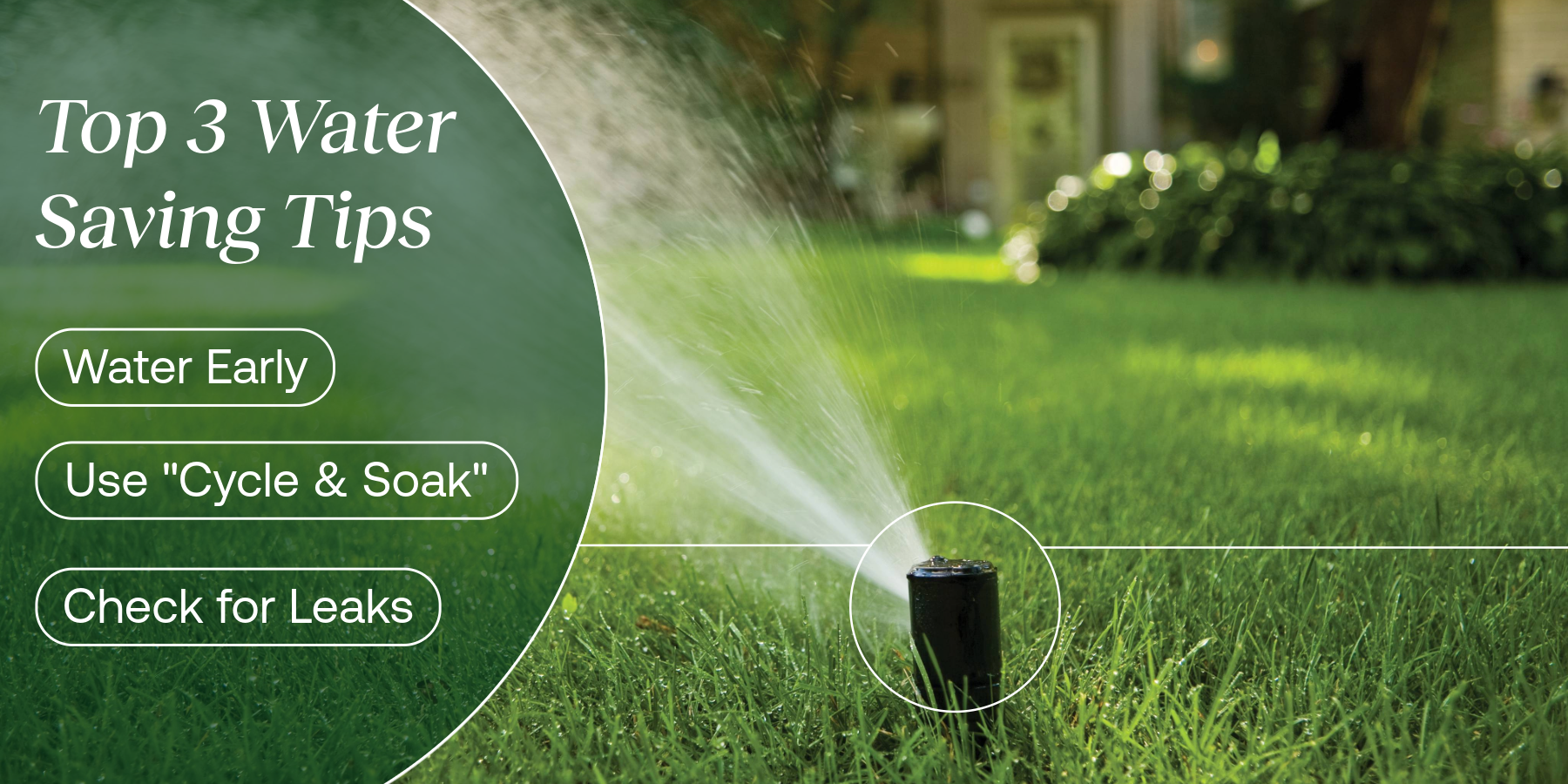3 Practical Tips to Enhance Your Landscape Watering Efficiency

With increasing water scarcity and changing climate, maintaining your landscape is more important than ever. Some states require homeowners to reduce outdoor watering to preserve water resources. Even in areas where restrictions aren't enforced, responsible water use is crucial for the environment, communities and our own pockets.
Water conservation is a critical issue that demands our attention. As pioneers of efficient watering, Rain Bird believes in striking a balance between maintaining lush, green landscapes and preserving water resources.
In this article, we'll discuss the relevance of automatic lawn irrigation for sustainable irrigation solutions and offer tips to help drought-proof your yard.
The Importance of Lawn Irrigation
A well-maintained yard not only adds curb appeal to your home but also provides several environmental, social, and economic benefits. Your lawn is a natural air filter that reduces heat and absorbs pollutants. A well-irrigated landscape also promotes biodiversity by providing habitat for insects, birds, and other wildlife. Moreover, studies have shown that well-maintained landscapes can increase property value by up to 20%.
It often goes overlooked that without watering the lawn, trees don’t get the water they need. Trees provide much more than shade, they help clean the air by producing oxygen and absorbing carbon dioxide. They also provide homes for birds and other wildlife. When trees are deprived of water, they become stressed which makes them susceptible to disease and pests.
Tips for Smart Watering
Automatic lawn irrigation systems ensure your lawn gets the right amount of water at the right time. They also help conserve water by preventing overwatering, leading to healthier plants and significant water savings. This makes an automatic sprinkler system a smart choice for sustainable landscaping. Here are some tips to help you make the most of your irrigation system:
1. Water Early
Consider the time of day and frequency of your watering. Early morning is the most efficient time to water your lawn, as lower temperatures mean less water is lost to evaporation. Adjust your watering schedule based on weather conditions to water less frequently during rainy periods. The Rain Bird ARC 8 Smart Residential Controller lets you program your irrigation settings from your smartphone and connects to online weather services to adjust its schedule to your local forecast.
2. Use “Cycle and Soak” to Avoid Run-Off
Some California jurisdictions mandate limited watering days. Watering less frequently can promote deep root growth, which enables plants to withstand periods without water. However, watering for too long in one period can cause wasteful run-off. Instead, use “cycle and soak” scheduling to set up multiple irrigation cycles, followed by a “soak” period to provide sufficient water to plants without causing run-off.
3. Monitor your Water Bill and Check for Leaks
If your water bill seems high, or has increased without an obvious reason, check your irrigation system for leaks and clean, fix or replace any equipment that is not working. If need be, contact a professional irrigation contractor in your area.
Upgrade Your System to More Efficient Equipment
Studies have shown that installing updated, more efficient irrigation technology conserves more water than restricting consumer use. Some states and communities offer rebates to support irrigation equipment upgrades. Here are the easiest ways to make your existing irrigation system more efficient:
Weather-Based Controllers
Weather-based controllers, such as the Rain Bird ARC Series Smart Residential Controller, can save an average home nearly 7,600 gallons of water annually by using local weather data to adjust irrigation to prevent over-watering.
Pressure Regulating Stems (PRS)
For every 10 psi in reduced water pressure, there is a 5% increase in water savings for sprays and a 7% increase in water savings for rotors. California has mandated all new sprays sold in the state have PRS technology because of the proven efficiency increase. You can upgrade your existing sprays using this now-mandated technology.
Rotary Nozzles for Sprays
Rotary nozzles retrofitted into existing spray bodies can improve water savings by up to 30% compared to standard spray nozzles. Rotary nozzles apply water more slowly and accurately than standard spray nozzles, reducing run-off and erosion and allowing the soil time to absorb more water.
Drip Irrigation
Low-volume drip irrigation systems maintain healthy landscapes with over 90% efficiency by delivering water at or near each plant’s root zone. The slow, targeted application of water reduces run-off and evaporation. Drip irrigation is especially convenient for container plantings and small areas like flower beds or around trees and shrubs.
The importance of water conservation cannot be overstated. As climate changes continue to intensify, implementing efficient watering systems like automatic lawn irrigation becomes an obvious choice. Tools such as weather-based controllers, pressure regulating stems, rotary nozzles, and drip irrigation systems can drastically reduce water usage while ensuring your landscape remains verdant and healthy. By making these smart, sustainable choices, we can all play our part in preserving our planet's precious water resources. Remember, every drop saved today contributes to a more sustainable tomorrow.
